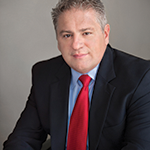Building Relationships
Heather Goodwill, practice manager at the Arthritis Center of Lexington, Ky., says a large part of the practice manager’s job involves building relationships with patients, insurers, hospitals and staff.
“By building a relationship with insurers, we can bypass the 800-number and usually have concerns or issues expedited,” says Ms. Goodwill. “We also have a number of elderly patients who need assistance choosing the best insurance policy. They may see a plan that is less expensive, but don’t realize the costs of medications aren’t covered.”
Ms. Goodwill also oversees staff training and recently joined forces with Pfizer to offer its staff sensitivity training on what it’s like to live with a rheumatic illness.
“By wearing flotation devices on their arms, they could experience how challenging it is to go about daily tasks when you have limited range of motion,” says Ms. Goodwill. “Another exercise required wearing vision impairment glasses to learn what it’s like to live with macular degeneration.”
Although staff members had previously been sympathetic to patient conditions, Ms. Goodwill says the training led to conversations about how staff might intervene to make office visits and other services easier for elderly patients.
Best Practices

Mr. Waldrup
Practice growth is another area where practice managers can play a role. When Ray Waldrup joined Low Country Rheumatology in 2009 as practice manager, it comprised four rheumatologists and 25 employees in a single location. Mr. Waldrup helped grow Low County Rheumatology into Articularis Healthcare Group, the largest rheumatology practice in the U.S. today, with offices in South Carolina, Georgia and Florida, and between 200 and 300 employees.
Networking with other practice managers through the ACR/ARP offers a chance for practice managers to learn about best practices they can implement into their own practices. For example, Mr. Waldrup says his practice deals with patient cancellations by using an automated system that sends a text message to the next patient on the wait list when a patient cancels their appointment.
“Patients have 15 minutes to respond. In the event they don’t, the system contacts the next patient on the waiting list,” he says.
Mr. Waldrup’s practice has also solved the problem of the logjam that often occurs when refilling patient prescriptions.
“Often, pharmacies tell patients they need to get their doctor’s approval before a prescription is refilled,” says Mr. Waldrup. “This can result in a rheumatology practice receiving 50–100 sheets on their fax machine or numerous robocalls from the pharmacy requesting physicians fill a patient’s script.”
To solve these issues, Mr. Waldrup’s practice now offers patients a refill request line and an online portal where they can renew prescriptions in a timely manner.

